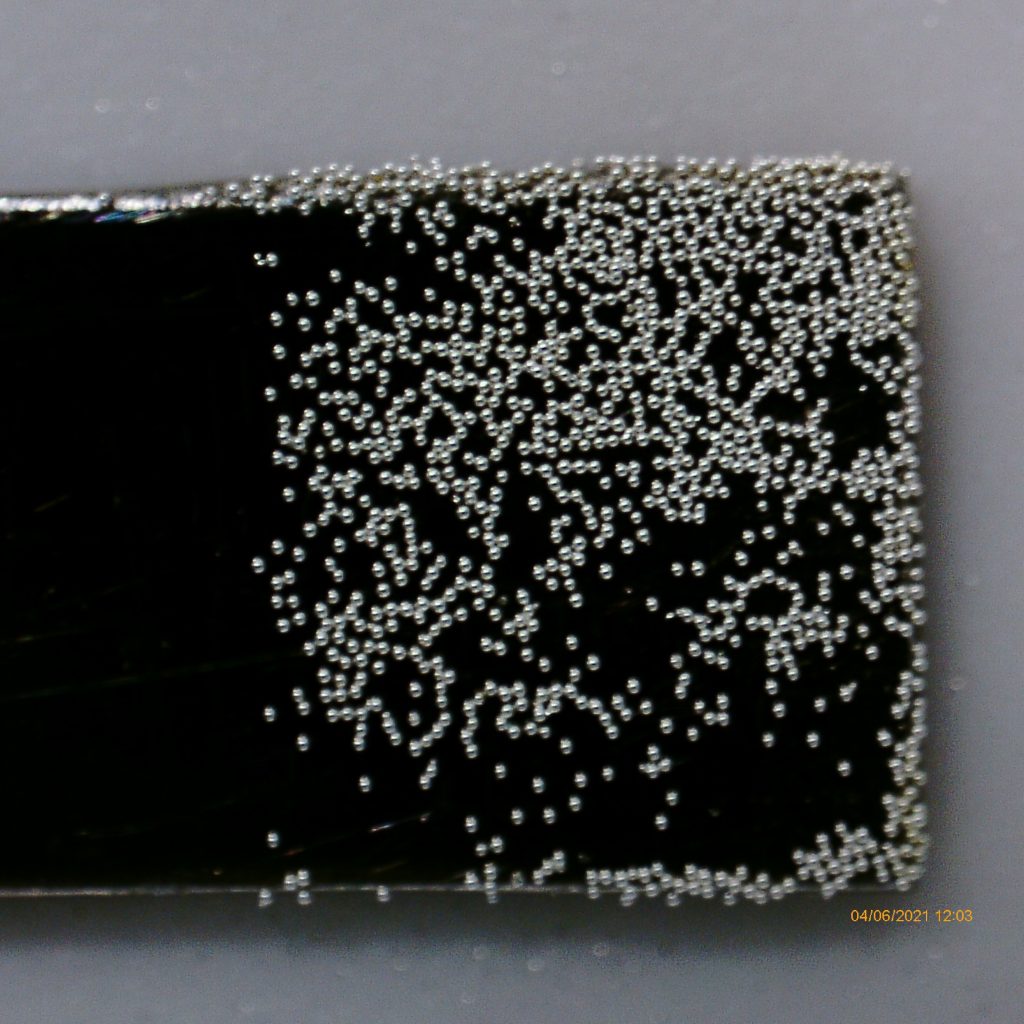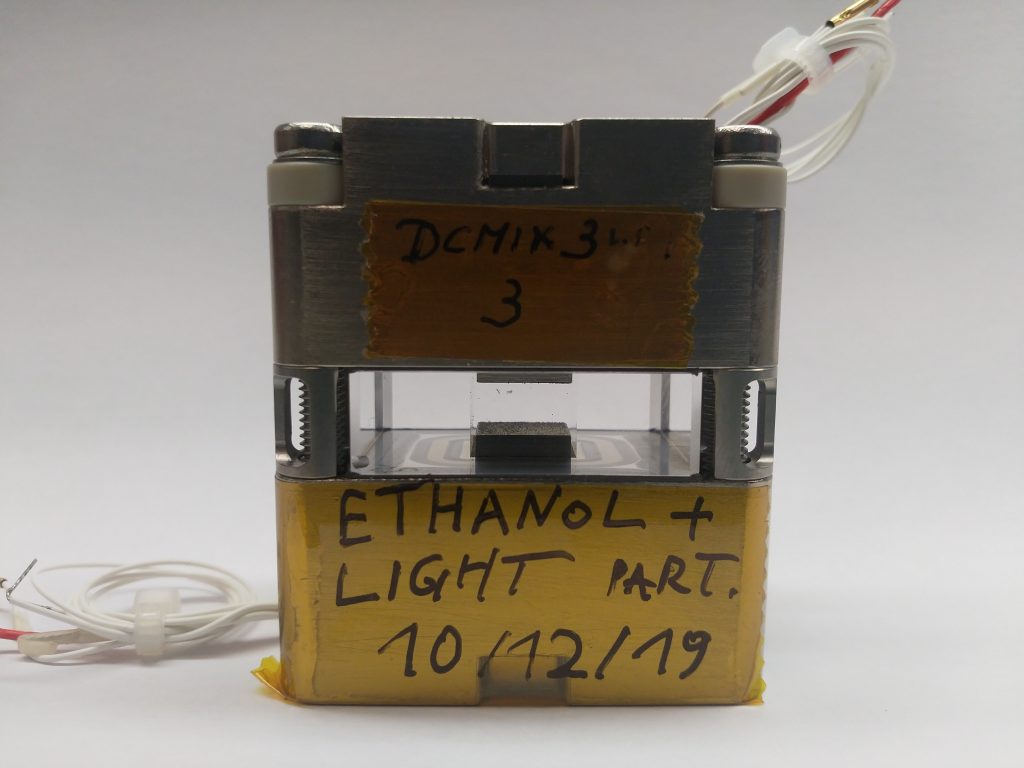Any space experiment requires in general a long preparation stage in which different activities are executed. These are typically needed for a number of reasons, e.g., to define in detail the experiment scientific requirements (ESR), to design, manufacture and test the space hardware, to prepare the required “samples” (i.e. the considered liquid and particles for the Particle Vibration experiment), to assess the compatibility of all these materials with the severe conditions established during the launch and “in space”, to verify that they are stable and do not undergo degradation over long times, to prepare all the required software, to train the astronauts, to prepare the procedures for the ground control teams, etc. etc.
This long sequence of key activities/events for the Particle Vibration (T-PAOLA) project can be summarized as follows:
Long term (from 11th of December 2019 till 11th of June 2020) compatibility tests were conducted to demonstrate that the considered fluid (ethanol) and particles (made of glass and silver) were compatible with the materials to be used to develop the experiment-specific hardware (the so-called cell arrays).
The manufacturing of the new cell arrays for the PARTICLE-VIBRATION experiment started on April 2019 (parts procurement) and was completed (HW integration) on 18 July 2020.
The cell arrays underwent thermal acceptance tests (Sept 2020) to verify the compatibility of the hardware with the temperatures established during the launch and in space (on board the ISS).
The research team tested and optimised the procedures to inject ethanol and particles with different densities into the fluid containers between Oct and Dec 2020 to minimize the number of particles damaged during the injection process (in particular for the “hollow” particles case).
The ability of glass particles to withstand the typical launch vibrations produced by the SpaceX Falcon rocket was verified in UK during February 2021 .
The possibility to apply sinusoidal thermal modulation to the fluid containers by means of dedicated software was tested between Oct. and Dec. 2020.
The Fluid containers (cell arrays) were filled with the required degassed liquid and particles during June 2022.
Functional tests (verification of thermal control system and temperature sensors) were executed during June-July 2022.
The joint ESA-UKSA manufactured hardware FAR (Final Acceptance Review) took place during the 2022 Spring-Summer timeframe. The preparation of the Acceptance Data Pack was started on May 2022 and completed during the Summer 2022. The Particle Vibration (Cell Array) FAR was held 8th August 2022. The UK Space Agency signed the Certificate of Conformity/Acceptance prepared by the Payload Developer (QinetiQ) on 12 Oct 2022.





The liquid and particle preparation
Click on the image on the left to know more about how the research team at the University of Strathclyde prepared the particles and the liquid.
Click on the image to the left to know more about the preliminary fluid-hardware compatibility and particle-visulization tests, which were carried out on Earth before executing the experiment in space.

